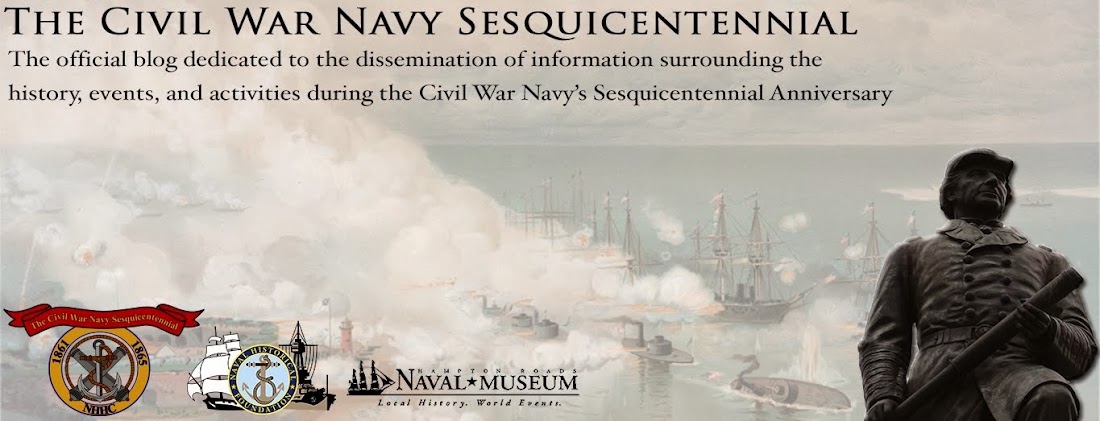
In prior posts, I covered the events transpiring at the Pensacola Navy Yard (Florida) and Ft. Pickens through 1861:
Takeover of Pensacola by Confederates and Union withdrawal to Ft. Pickens (26 Aug 2011)
Additional reinforcement of Ft. Pickens and destruction of the privateer CSS Judah (11 Sep 2011)
Confederate landing on Santa Rosa Island and massive artillery duel (20 Nov 2011)
This post closes out the major events at Pensacola during the war, culminating in the reoccupation of the town and the Navy Yard by the Union in mid-1862. At the beginning of 1862, the Confederates had amassed a force of 16,000 troops at Pensacola, under the command of Major Gen. Braxton Bragg. Reinforcements could be brought in by rail from Mobile, Alabama, as needed. In January 1862 another, smaller artillery duel was fought between Union forces on Santa Rosa Island and Confederate forces on the mainland.
Events out west eventually dictated what the Confederacy would do at Pensacola. In February 1862, Forts Henry and Donelson fell to the Union, by a joint Navy/Army operation. In March 1862, US Navy and Army forces began to move on the Mississippi River, taking ports and important fortifications. These Union activities forced the Confederacy to have to deploy forces to the western theatre to meet the Union threat. Bragg was ordered to move his forces westward to bolster the Confederate military effort there. Preparatory to abandoning Pensacola, Bragg ordered his XO:
“I desire you particularly to leave nothing the enemy can use; burn all from Fort McRee to the junction with the Mobile road. Save the guns, and if necessary destroy your gunboats and all other boats. They might be used against us. Destroy all machinery, etc., public and private, which could be useful to the enemy; especially disable the sawmills in and around the bay and burn the lumber. Break up the railroad from Pensacola to the Junction, carrying the iron up to a safe point.”
Another skirmish between Union and Confederate troops was fought in late March/early April 1862 at Pensacola Bay. By then, withdrawal of Confederate forces was in full swing, although surprisingly the Union did not have detailed knowledge of these actions. In early April 1862, Bragg suffered a repulsing and bloody defeat by Gen. U.S. Grant at Shiloh, Tennessee, while later that month, Farragut bypassed Forts St. Philip and Jackson on the Mississippi and took New Orleans. These Union victories spelled the ultimate doom for any hope of holding on to Pensacola by the Confederacy, as well before then (approx. February 1862) the strategic decision had been made to withdraw all Confederate troops from Florida for use elsewhere.
By early May 1862, the evacuation of Pensacola and the Navy Yard was complete. The retreating Confederates set fire to any public property that “. . . could be of use to the foe.” Seeing the blaze, the US Army commander at Ft. Pickens dispatched his aide-de-camp and a small force to take possession of the Navy Yard and the town. Commander David D. Porter arrived at this time as well, hearing of the possible abandonment of the Navy Yard. For the rest of the war, Pensacola remained in Union hands and became a main base of operations for the West Gulf Blockading Squadron.
In retrospect, I think major kudos must go to young Army Lt. Adam J. Slemmer, who steadfastly obeyed his orders and retained possession of Ft. Pickens back in early 1861. Union control of this fort and Santa Rosa Island essentially bottled up the harbor at Pensacola and denied use of the Navy Yard by the Confederacy. In the words of Florida historian George F. Pearce (the title of his book on these events), Pensacola was "A Thorn in the Side of the Confederacy."
My USS Ft. Henry shipmate marine Sgt. Dave Ekardt has a great article summarizing all Union naval/marine actions at Pensacola on the Navy and Marine Living History web site.
Portrait of US Army Lt. Adam J. Slemmer (source: Fla. Dept. of State):


No comments:
Post a Comment